GODDESS DURGA IS COMING TO TOWN WITH HER CHILDREN: Kolkata’s Kumortuli artisans prepare for the frenzy
The languid hours of noon during the months of August-September become a little irksome for the Kumortuli artisans and shop-owners with regular knocks on their doors by young and frantic photo-artists, inquisitive bloggers and journalists coming at all odd hours of the day.
With barely two months left for the Pujas, the burden of work and costs for additional labour begin to mount. This work goes on from eight to one in the morning and again resumes after a few hours of break at around four or five in the evening.
But those familiar with the people of north Kolkata know that the offer for a conversation – no matter how random – is never be turned down. And therefore, every idol-maker you call out to has a few minutes to spare for a chat.
Craftsmen, craftswoman
A pleasantly smiling Maya Pal was chatting with a bunch of enthusiastic college-goers out there in the alleys to take pictures. Most of the workers around were fast asleep. Those awake – most of them male idol-makers – were sombrely piling up straw in the shape of fat tubes for framing fingers or limbs, or adding finishing touches to fibre idols that are bound for shipment in August itself.
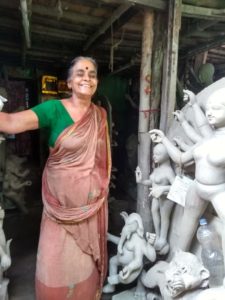
The narrow lane in front of her house is filled with twelve to five feet high idols – freshly made and yet to be coated with paint or adornments. The smell of mud, clay and dung can seem quite heavy on unaccustomed nostrils. Joining in, I wait for the group to finish their questions.
“Do you take part in making these idols too?” I ask, unaware of the fact that she is one of the few women sculptors making 20-22 idols each year in the span of four or five months preceding the Durga Puja, in Kolkata. This information is shared by Dilip Pal, a very polite and genial artisan. “Not only do I, my sons and daughters too help with the sculpting,” Maya Pal tells me.
Her sons work for the police force and the daughters are married. But during these few months, they all come together and get involved in their traditional family profession. Each year Maya Pal crafts around a dozen pieces mainly for the barir pujo (Durga idols for homes) in the various localities of Kolkata or a few towns outside of it. Her idols are five to six feet high and fill two storeys of her shed where these are made and kept along with tags mentioning names of the houses that have ordered them.
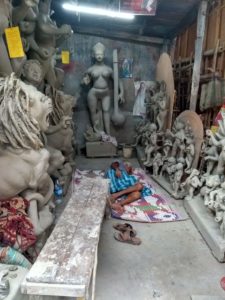
“Selecting the figurine’s face is like choosing a bride’s face for marriage,” Maya says, offering an interesting perspective that male craftsmen may not have observed. Customers go by a catalogue. Most want full round faces, big eyes and sweet demeanour. Thin tapering faces and sharper eyes don’t appeal to most customers.”
The idol-makers’ connect with Devi Durga
Walking further down the confusing and convoluted lanes of Kumortuli, I come across Dilip Pal, maker of the Dutta Bari (situated near Ganesh Talkies in Girish Park) Durga idol. The Kumartuli artisans aren’t hesitant about pointing out the specialities of each other’s craft or referring a sculptor practicing a different form of art to any inquisitor interested in knowing about the place and its art.
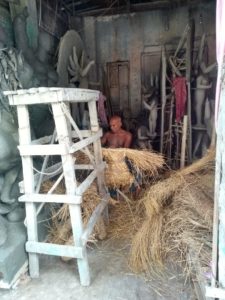
There is another Dilip Pal who crafts the idols of the famous Shobhabazar Rajbari (the palace of the Shobhabazar royal family), and in trying to locate him I chance upon his most polite and friendly namesake. Pal talks about how the art of making idols of Durga has been encoded in his biological make-up, tinged with the nostalgia of childhood, one he spent encountering the evolution of the craft.
“I also make idols for commercial purposes that are sent to various cities. For instance I make idols of Jishu (Jesus Christ) that are collected from me by the owner of a retail outlet. It proves more profitable than selling Durga idols. But I feel incomplete without making at least one Durga figurine a year,” Dilip Pal says.
It is largely due to an inner connect that Pal makes the goddess figures at the Bagbazar settlement of idol-makers that is a new extension of the old kumor-para at Shobhabazar.
But a lot of the artisans look at it merely as the means of sustenance, without feeling the inner connect like Dilip Pal does. Neither are the four days of Puja spent by Kumortuli artisans in making merry like the rest of the people in this city. The orders for Lakshmi idols bound for worship within a fortnight start pouring in and must be delivered on time.
Slow, but exquisite craftsmanship
Few lanes away, down Raja Nabakrishna Street where the majestic Shobhabazar Rajbari stands, whiffs of the Kumortuli ambiance are carried down with the royal family goddess in the process of getting a corporeal form. However while the settlement of professional sculptors and potters stays steady and punctual about their craft, the Rajbari is slightly slack.
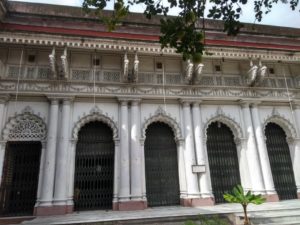
Though it is mid-August, the Rajbari idol has had little life breathed into its structure beyond the bust. The face is yet to be given shape.
Here, making the royal Durga idol is a matter of exquisite delicacy, even though a tad slow. The work goes on till the day of Shoshti, the sixth day of Devi Paksha that marks the formal beginning of the Durga Puja. The coat of paint is applied less than a month prior to the Pujas and the adornments still later. The famous daaker shaaj or silver coloured decorations are brought from Krishnanagar.
As the months draw near to the main celebrations, the pressure starts to mount acutely on this hub located in the heart of the oldest and northernmost limits of the city.
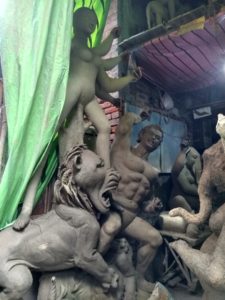
And so does the strangeness of the fact that the community of craftsmen that gives birth to a site of riotous merry-making in the city can themselves only take part in it in scant quantities.
[Photographs by Samriddha Dutta]

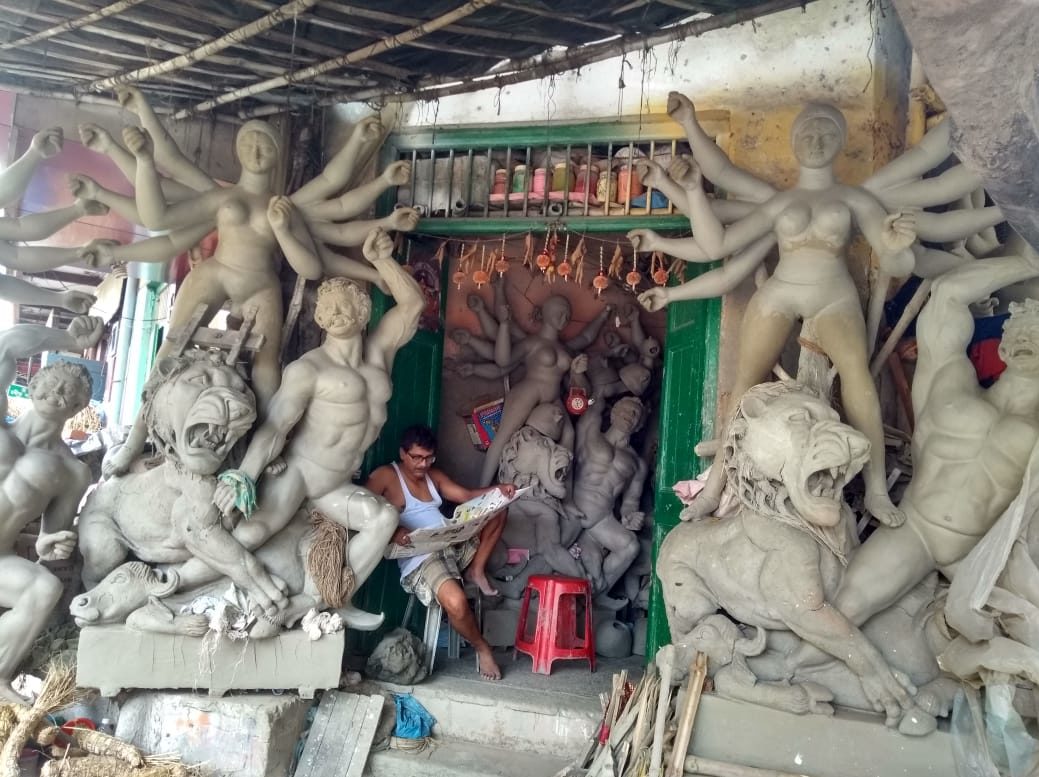
Comments are closed.